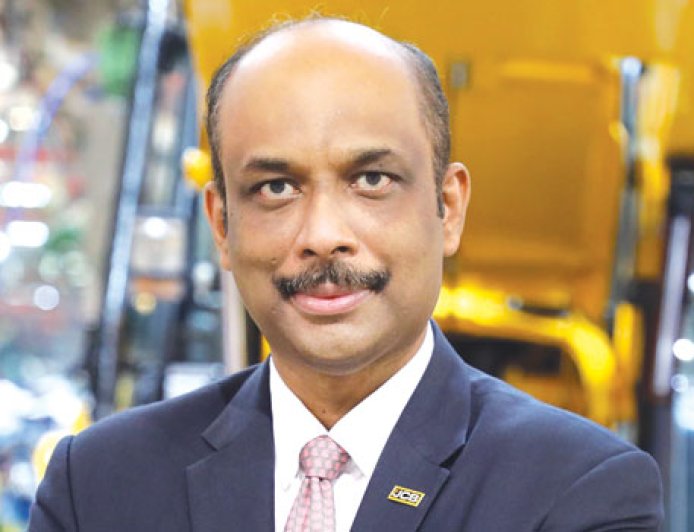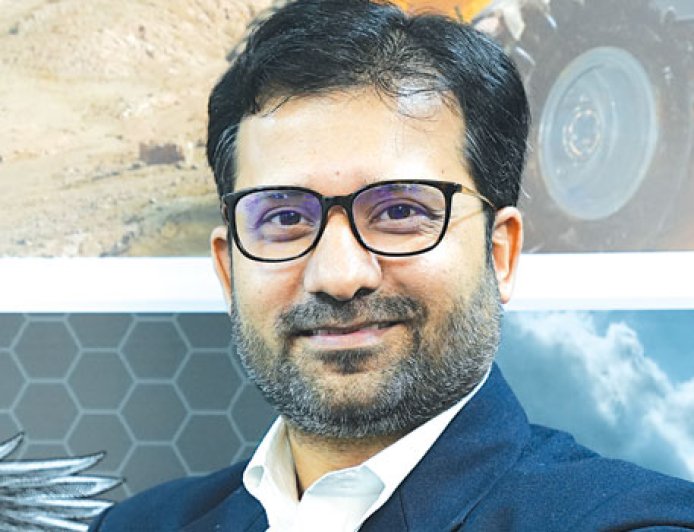Built to Last: The Durability and Innovation of Modern Compaction Equipment
India, one of the world’s fastest-growing economies, has witnessed a remarkable transformation in its infrastructure sector over the past few decades. This transformation has been powered, in part, by the growing utilization of compaction equipment. These machines have become the

India, one of the world’s fastest-growing economies, has witnessed a remarkable transformation in its infrastructure sector over the past few decades. This transformation has been powered, in part, by the growing utilization of compaction equipment. These machines have become the unsung heroes of India’s road construction and development projects, ensuring the durability and longevity of roads, buildings, and other critical structures.
Equipment Times explores the significance of compaction equipment in India, its impact on the country’s development, and the evolving technology that drives this essential machinery.
Compaction equipment, including soil compactors, vibratory rollers, and pneumatic tire rollers, plays a pivotal role in the construction industry in India. Their primary function is to compact soil, asphalt, or concrete to increase its density and remove air voids. This process is critical for achieving the desired strength, stability, and durability of the constructed infrastructure. Compaction equipment ensures that roads are smooth, buildings stand tall, and rail networks remain resilient against the test of time.
Market
The global market for compaction equipment is experiencing a substantial surge in demand as countries invest heavily in infrastructure development and construction projects. Compaction equipment, comprising a diverse range of machines designed to compact soil, asphalt, or concrete, is proving to be a cornerstone in the construction industry. This feature explores the dynamics, growth factors, and future prospects of the market for compaction equipment.
The Global Boom
In recent years, the global construction industry has been on an upswing, fuelled by factors such as urbanization, population growth, and increased infrastructure investments. As a result, the market for compaction equipment has witnessed robust growth. Compaction machinery is used in a wide array of applications, from road construction and residential buildings to industrial projects, making it an essential component of the modern construction sector.
Urbanization and Infrastructure Investment
Rapid urbanization, especially in emerging economies, has led to a soaring demand for new buildings, roads, and other infrastructure projects. To ensure the quality and durability of these projects, compaction equipment has become indispensable. Government initiatives worldwide, such as China’s Belt and Road Initiative, India’s Bharatmala program, and the US infrastructure bill, are set to drive further growth in the industry.
Technological Advancements
The compaction equipment market is not immune to the wave of technological advancements sweeping the construction industry. Modern machines are equipped with cutting-edge features, including GPS technology, telematics, and real-time data monitoring. These innovations enhance efficiency and precision, allowing operators to achieve optimal compaction while minimizing errors.
The compaction equipment industry in India has witnessed significant technological advancements in recent years. Manufacturers are integrating advanced features, such as GPS technology and telematics, into their machines to enhance precision and efficiency. These innovations enable operators to achieve uniform compaction while minimizing the risk of over-compaction or missed spots.
Moreover, there is a growing trend toward more environmentally friendly compaction equipment, with the development of electric and hybrid models. These machines produce fewer emissions, contributing to India’s efforts to reduce its carbon footprint.
Environmental Considerations
Sustainability is a growing concern in the construction sector. In response, manufacturers are developing eco-friendly compaction equipment, including electric and hybrid models that reduce emissions and contribute to a greener, more sustainable construction process. This eco-conscious approach aligns with global efforts to reduce the environmental impact of construction.
Key Applications in India
Road Construction: Compaction equipment is indispensable in building and maintaining India’s vast network of roads. With an extensive road infrastructure expansion program in place, these machines help create high-quality, durable road surfaces that withstand the country’s diverse climatic conditions.
Urban Development: In rapidly growing urban centers, compactors are crucial for laying the foundations of modern skyscrapers and residential buildings. By ensuring proper compaction, they contribute to the safety and longevity of these structures.
Railways: Compaction equipment is used to prepare the subgrades and ballasts for railway tracks, making sure they are stable and can endure heavy loads. India’s extensive railway network relies on compaction machinery to maintain a reliable and safe transportation system.
Airport Construction: Airports demand robust, stable runways and taxiways. Compactors are instrumental in preparing the ground to handle the weight of aircraft and the wear and tear associated with constant takeoffs and landings.
Challenges and Opportunities
Despite the growing significance of compaction equipment, the industry faces certain challenges. One primary concern is the need for skilled operators and technicians who can maximize the efficiency and longevity of these machines. Training programs and educational initiatives can help bridge this gap.
In the coming years, the Indian compaction equipment sector is expected to benefit from increasing investments in infrastructure projects, including the Bharatmala and Sagarmala initiatives. These projects aim to enhance connectivity, promote economic growth, and elevate the country’s overall infrastructure. As a result, the demand for compaction equipment is likely to surge, offering significant opportunities for both domestic and international manufacturers.
Compaction equipment has quietly become a linchpin of India’s infrastructure development. Its role in ensuring the durability and longevity of roads, buildings, and other essential structures cannot be understated. With evolving technology and a growing emphasis on quality construction, the compaction equipment sector is poised to play a crucial role in India’s journey towards becoming an infrastructure powerhouse. As the country continues its march towards progress, these machines will remain at the forefront, quietly shaping the nation’s future.
As the global construction industry continues to expand, the market for compaction equipment remains solid and full of potential. These machines are vital in ensuring the quality, durability, and safety of construction projects. Technological advancements and environmental consciousness are reshaping the industry, making it more efficient and sustainable. With significant infrastructure projects on the horizon in numerous countries, the demand for compaction equipment is set to remain robust, promising a bright future for manufacturers and the construction industry as a whole.
Industry speaks…
 Dimitrov Krishnan, Managing Director, Volvo CE India, said, “The regulatory framework for emission standards in India is primarily overseen by the Ministry of Road Transport and Highways (MoRTH) and the Environment Ministry. The BS emission standards set the permissible levels of pollutants that construction equipment engines can emit. These standards are like the Euro norms and have been progressively tightened over the years. India has been following a phased implementation of the BS emission standards. Each new stage brings stricter limits on emissions. As of my last update, India had implemented BS-IV and BS-IV A, with plans to transition to BS-V and BS-VI in the coming years. India planned to adopt BS-V and BS-VI emission standards for construction equipment engines in the future, similar to the timeline for on-road vehicles. These standards would require advanced emission control technologies, such as exhaust gas recirculation (EGR), diesel particulate filters (DPF), and selective catalytic reduction (SCR) systems.”
Dimitrov Krishnan, Managing Director, Volvo CE India, said, “The regulatory framework for emission standards in India is primarily overseen by the Ministry of Road Transport and Highways (MoRTH) and the Environment Ministry. The BS emission standards set the permissible levels of pollutants that construction equipment engines can emit. These standards are like the Euro norms and have been progressively tightened over the years. India has been following a phased implementation of the BS emission standards. Each new stage brings stricter limits on emissions. As of my last update, India had implemented BS-IV and BS-IV A, with plans to transition to BS-V and BS-VI in the coming years. India planned to adopt BS-V and BS-VI emission standards for construction equipment engines in the future, similar to the timeline for on-road vehicles. These standards would require advanced emission control technologies, such as exhaust gas recirculation (EGR), diesel particulate filters (DPF), and selective catalytic reduction (SCR) systems.”
He further added, “In road construction, several compaction methods and equipment are used to ensure that the materials comprising the road, such as soil, aggregate, and asphalt, are properly compacted to achieve the desired density and strength. The choice of compaction method depends on the type of material being compacted and the specific requirements of the road construction project.”
 Deepak Shetty, CEO & Managing Director, JCB India, said, “The JCB117 soil compactor leads the compaction industry in output with one of the best Compaction performances per pass. In addition, the machine is equipped with ‘LiveLink’ and ‘IntelliCompaction’ – a Compaction Monitoring System that assists in optimising the number of passes and enables monitoring of performance with real-time compaction information. It is an innovation that is disrupting the way compaction is carried out. It measures relative compaction density which is continuously displayed to the operator using a colour LCD screen. This helps the operator to avoid both excessive and lower than required compaction levels with predetermined set values as reference. It also saves time and resources by avoiding repeated compaction. The machine optimises the number of passes and enables monitoring of performance to achieve high productivity. The JCB Compaction machines have optimised front and rear weight distribution, amplitude & frequency combinations. They also have high centrifugal forces with a new balanced suspension system to ensure the highest energy transfer, be it soil or asphalt application. The design of the JCB’s vibratory system with a single-piece eccentric shaft and overturning weights is well-proven. It delivers excellent compaction performance for all applications.”
Deepak Shetty, CEO & Managing Director, JCB India, said, “The JCB117 soil compactor leads the compaction industry in output with one of the best Compaction performances per pass. In addition, the machine is equipped with ‘LiveLink’ and ‘IntelliCompaction’ – a Compaction Monitoring System that assists in optimising the number of passes and enables monitoring of performance with real-time compaction information. It is an innovation that is disrupting the way compaction is carried out. It measures relative compaction density which is continuously displayed to the operator using a colour LCD screen. This helps the operator to avoid both excessive and lower than required compaction levels with predetermined set values as reference. It also saves time and resources by avoiding repeated compaction. The machine optimises the number of passes and enables monitoring of performance to achieve high productivity. The JCB Compaction machines have optimised front and rear weight distribution, amplitude & frequency combinations. They also have high centrifugal forces with a new balanced suspension system to ensure the highest energy transfer, be it soil or asphalt application. The design of the JCB’s vibratory system with a single-piece eccentric shaft and overturning weights is well-proven. It delivers excellent compaction performance for all applications.”
 Shalabh Chaturvedi, Managing Director, CASE Construction Equipment, said, “Our equipment, such as the CASE 952EX Soil Compactor, is equipped with a state-of-the-art electronically turbocharged engine. The engine is compliant with BS (CEV) IV emission standards, ensuring that it meets the latest environmental regulations. The engine delivers variable horsepower options at 220 RPM, offering three power levels: 193HP, 205HP, and 220HP. This range of power options allows for versatility and efficient performance in various applications, including road compaction and mining. By incorporating advanced emission control technology, such as a diesel oxidation catalyst (DOC) system, the engine achieves comprehensive after-treatment, resulting in reduced emissions and better environmental performance. This ensures that our equipment not only delivers high productivity but also prioritizes sustainability. Overall, our engines are designed to provide exceptional responsiveness, improved fuel efficiency of up to 5%, and comply with the stringent emissions standards laid out by BS (CEV) IV, making them reliable and environmentally friendly power sources for our equipment. India’s market for roads and highways is currently experiencing a positive growth trajectory.”
Shalabh Chaturvedi, Managing Director, CASE Construction Equipment, said, “Our equipment, such as the CASE 952EX Soil Compactor, is equipped with a state-of-the-art electronically turbocharged engine. The engine is compliant with BS (CEV) IV emission standards, ensuring that it meets the latest environmental regulations. The engine delivers variable horsepower options at 220 RPM, offering three power levels: 193HP, 205HP, and 220HP. This range of power options allows for versatility and efficient performance in various applications, including road compaction and mining. By incorporating advanced emission control technology, such as a diesel oxidation catalyst (DOC) system, the engine achieves comprehensive after-treatment, resulting in reduced emissions and better environmental performance. This ensures that our equipment not only delivers high productivity but also prioritizes sustainability. Overall, our engines are designed to provide exceptional responsiveness, improved fuel efficiency of up to 5%, and comply with the stringent emissions standards laid out by BS (CEV) IV, making them reliable and environmentally friendly power sources for our equipment. India’s market for roads and highways is currently experiencing a positive growth trajectory.”
 Ramesh Palagiri, Managing Director & CEO, Wirtgen India, said, “The Wirtgen Group Hamm compactors come with more than 125 years of experience in the development and manufacture of roller and compactors for soil and asphalt compaction. HAMM, the German manufacturer leading the field in compaction technology, is a member of the internationally successful WIRTGEN GROUP and a global leader in the market of road rollers with more than 180 years of compaction expertise. In India we offer the Hamm HC 119i soil compactor, HD 99i Asphalt compactors, which are produced at our Pune plant. Hamm soil Compactors are built with a patented design of three-point articulation joint. This connects the front and rear end of the compactor and enables excellent directional stability and provides driver safety on difficult terrains and also adds to driver comfort. Hamm offers two amplitudes (High and Low) and two frequencies (High and Low). This range of amplitude and frequency ensures optimum compaction results in almost all the operating environments in India.”
Ramesh Palagiri, Managing Director & CEO, Wirtgen India, said, “The Wirtgen Group Hamm compactors come with more than 125 years of experience in the development and manufacture of roller and compactors for soil and asphalt compaction. HAMM, the German manufacturer leading the field in compaction technology, is a member of the internationally successful WIRTGEN GROUP and a global leader in the market of road rollers with more than 180 years of compaction expertise. In India we offer the Hamm HC 119i soil compactor, HD 99i Asphalt compactors, which are produced at our Pune plant. Hamm soil Compactors are built with a patented design of three-point articulation joint. This connects the front and rear end of the compactor and enables excellent directional stability and provides driver safety on difficult terrains and also adds to driver comfort. Hamm offers two amplitudes (High and Low) and two frequencies (High and Low). This range of amplitude and frequency ensures optimum compaction results in almost all the operating environments in India.”
 Vishwesh Rai, General Manager, Fayat Road Equipment – Sales India, said, “To guarantee smooth operations, we deploy our specialized service engineers on-site to train operators and customer crew members. Our service team maintains a constant watch on the machine’s condition through on-site visits and our cutting-edge Dyn@link system. This remote monitoring system empowers equipment managers and maintenance teams to access real-time data and diagnostics for the compactor. Dynapac Aftermarket is dedicated to maximizing uptime for all pavers and compactors by leveraging our extensive dealer network across India. Additionally, we operate a central warehouse in Pune and additionally, we keep spare parts inventory at various regional dealers’ locations to provide support for India and neighboring countries. Dynapac’s CEV stage IV compliant compaction equipment with eco mode and efficiency eccentric system helps reduce start-up torque by 11 kW, resulting in 50% less energy consumption and a cleaner environment. It’s time to make another advancement by transitioning to CEV V starting next year, further reducing our carbon footprint and enhancing the eco-friendliness of our machines.”
Vishwesh Rai, General Manager, Fayat Road Equipment – Sales India, said, “To guarantee smooth operations, we deploy our specialized service engineers on-site to train operators and customer crew members. Our service team maintains a constant watch on the machine’s condition through on-site visits and our cutting-edge Dyn@link system. This remote monitoring system empowers equipment managers and maintenance teams to access real-time data and diagnostics for the compactor. Dynapac Aftermarket is dedicated to maximizing uptime for all pavers and compactors by leveraging our extensive dealer network across India. Additionally, we operate a central warehouse in Pune and additionally, we keep spare parts inventory at various regional dealers’ locations to provide support for India and neighboring countries. Dynapac’s CEV stage IV compliant compaction equipment with eco mode and efficiency eccentric system helps reduce start-up torque by 11 kW, resulting in 50% less energy consumption and a cleaner environment. It’s time to make another advancement by transitioning to CEV V starting next year, further reducing our carbon footprint and enhancing the eco-friendliness of our machines.”
Ajay Sharma, National Product Manager – Compactor, Escorts Kubota, said, “In India, the Roads and Highway sector market is anticipated to grow at a robust rate in the forecast period 2024 to 2028. Several governmental plans towards urbanization as well as smart city plans are the major factors propelling the market growth in the forecast period in India.
For Instance, India has the world’s second-largest road network. In the Roads and Highway sector, India has a well-developed framework for Public-Private Partnership. (PPP) The GOI is ready to invest approximately Rs. 1 trillion by 2028 in the roads and infrastructure. Investment plans of the government in roads, highways, and airports which itself is indicative that the requirement of compactor will be in high demand. 5250 Soil Compactor has a single Frequency of 30Hz and dual Amplitude (1.72/0.8) which is most suitable for Indian Soils. In 5250 Plus we have provided a Dual Frequency of 33Hz/42Hz and dual Amplitude (1.90/0.8) which is suitable for various soils in India. Regarding EC3664 — We have Dual Frequency (55Hz/64Hz) and single aptitude. Option of Front Drum Vibration / Both Drum Vibration (Front & Rear) is a standard feature.”
Hits: 26








